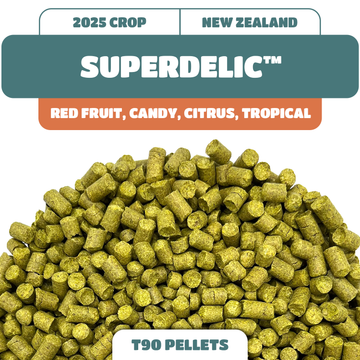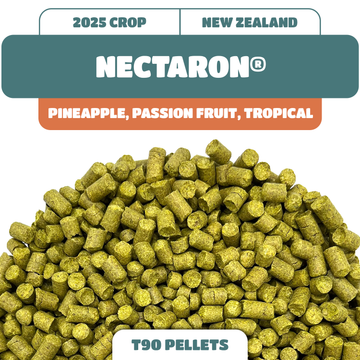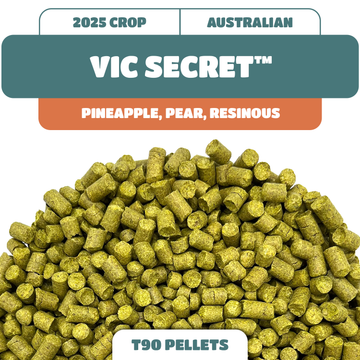Grains Used In Beer
ALL beer is made from four primary ingredients: grain, hops, yeast, and water. The combination of these and the brew master's skill makes every brew unique. Therefore, one of the most significant variables which beer makers can play with is grain.
The primary grains of barley, wheat, rice, corn, oats, and rye, are same as those used to make breakfast cereals. However, barley and wheat must undergo a malting process before brewers can use them. This malting process stimulates the germination of grain which metabolizes the maltose of the natural grain sugar. This malt sugar is what the yeast feeds on during the fermentation process. To trigger fermentation, the seed is soaked in water until the plant sprouts. Then, just before it emerges from the seed hull, it is dried in a kiln. Different methods of drying can result in different colors and flavors of malt.
Grains give beer three essential qualities:
- Malt flavors and aromas can range from gently corn-like to burnt coffee and mocha-like, with various flavor points in between.
- The type of malt used determines each beer's color. All beers are made from a large proportion of light-colored malts because enzymes convert malt starch into maltose.
- Fermentable material is “food for the yeast.” The sugars derived from the malt provide all of the food that yeast will consume and then convert it into alcohol and carbon dioxide.
The history of brewing beer is rooted in barley. Although “beer” can be brewed from almost any malted grain, the structure of barley has always been like a gift from the Gods' to brewmasters. Without a doubt, Barley is respected as the perfect grain for malting, mashing, and brewing.
In brewing circles, barley malts rate top billing. This place of honor is due mainly to an evolutionary advantage other grains don’t have. Barley contains husks, which keep the mash (the name for the grains submerged in boiling water) loose and allow drainage of the wort—the broth that eventually becomes beer. Other grains simply don’t have husks.
For flavor, brewers often blend the lead grain barley with a host of supporting fermentable grains, including rye and wheat. Unfortunately, there's no organized coding system for classifying the hundreds of barley varieties available; barley is grouped in several broad classifications.
- Base malts are the workhorse malts and provide the preponderance of the proteins, fermentable sugars, and minerals required to brew beer.
- Specialty malts are auxiliary grains that are a catalyst for action in the brewing process. Brewmasters can increase a beer’s body, improve head retention, and add characteristics including color, aroma, and flavor from specialty malts. Specialty malts give the resulting brew recognizable qualities such as coffee, chocolate, biscuit, and caramel tastes. In addition, specialty grains can be custom blended to achieve unique flavor profiles and characteristics. A fantastic variety of specialty malts include Crystal or caramel malts that are especially stewed to create crystalline sugar structures inside the grain's hull. These add sweetness to the beer.
- Roasted malts are kilned or roasted at various temperatures to impart specific flavor profiles. This roasting is similar to the process which coffee beans undergo to achieve a similar conversion. Roasting dark malts reaches the robust flavors associated with stouts, Schwarz bier, bocks, and dark IPAs.
- Unmalted barley gives a rich, grainy character to the beer. As a result, unmalted barley is a crucial characteristic of styles such as dry stout. Unmalted barley also helps head retention, but it will make a beer visibly cloudy but won't affect its drinkability.
Brewing with Wheat
Wheat is the staple grain of Europe and North America. While its primary function has been the production of bread and pasta, wheat is also a critical factor in creating distinctive beers. The early weissbiers astounded drinkers with their pale color since they were “white” beers while others were “brown.” Many craft brewers feature wheat beers as some of their palest offerings. Belgian brewers seemed to have a particular affinity for wheat, which lends some exceptional quality to lambics and witbiers. Even British brewers use wheat as a secret ingredient in their ales.
Jam-packed full of proteins, wheat helps create a fuller body and mouthfeel and a foamy head that is thick and long-lasting. A large amount of wheat can result in a smooth, hazy brew such as a hefeweizen or a witbier. Wheat can also produce a slight tartness.
Brewers use wheat along with barley because of wheat's soft, crisp flavor – a remarkable quality that pairs well when using berries and other fruits. Beer drinkers seem to love the "natural" quality of wheat beers, which are often hazy with proteins and contrast the brightly filtered "industrial" brews. In addition, there is something about wheat that lends itself to their enjoyment during the summer months, whether they be Bavarian weissbiers, Belgian witbiers, or American wheat beers.
Other Grains
When working in conjunction with barley, rye can sharpen flavors, add complexity, crispness, and subtle spiciness, and make a beer taste drier. The grain also can be kilned to create chocolate or caramel flavors.
Using corn in brewing beer provides a smooth, somewhat neutral sweetness. Corn lightens a beer's body, decreases haziness, and stabilizes flavor. When used in conjunction with barley, oats create a creamy, full-bodied brew that's as smooth as satin. Stouts are a great example of this. As an ingredient in beer, rice imparts little discernible taste to the brew. Instead, the grain helps lighten a beer's body.
Most of the major commercial brands of beer are brewed with rice or corn. Purists accuse the brewing conglomerates of adding rice or corn to cut costs. Major commercial brewers do not make a secret of the grains these use to make the beer. Of late, Anheuser-Busch has listed rice as an ingredient used to make Budweiser. These combinations make the beer lighter than barley alone does. Light color is the objective of most brewers of pale lager. Many beer brewers adhere to an adage: "the lighter, the better."













